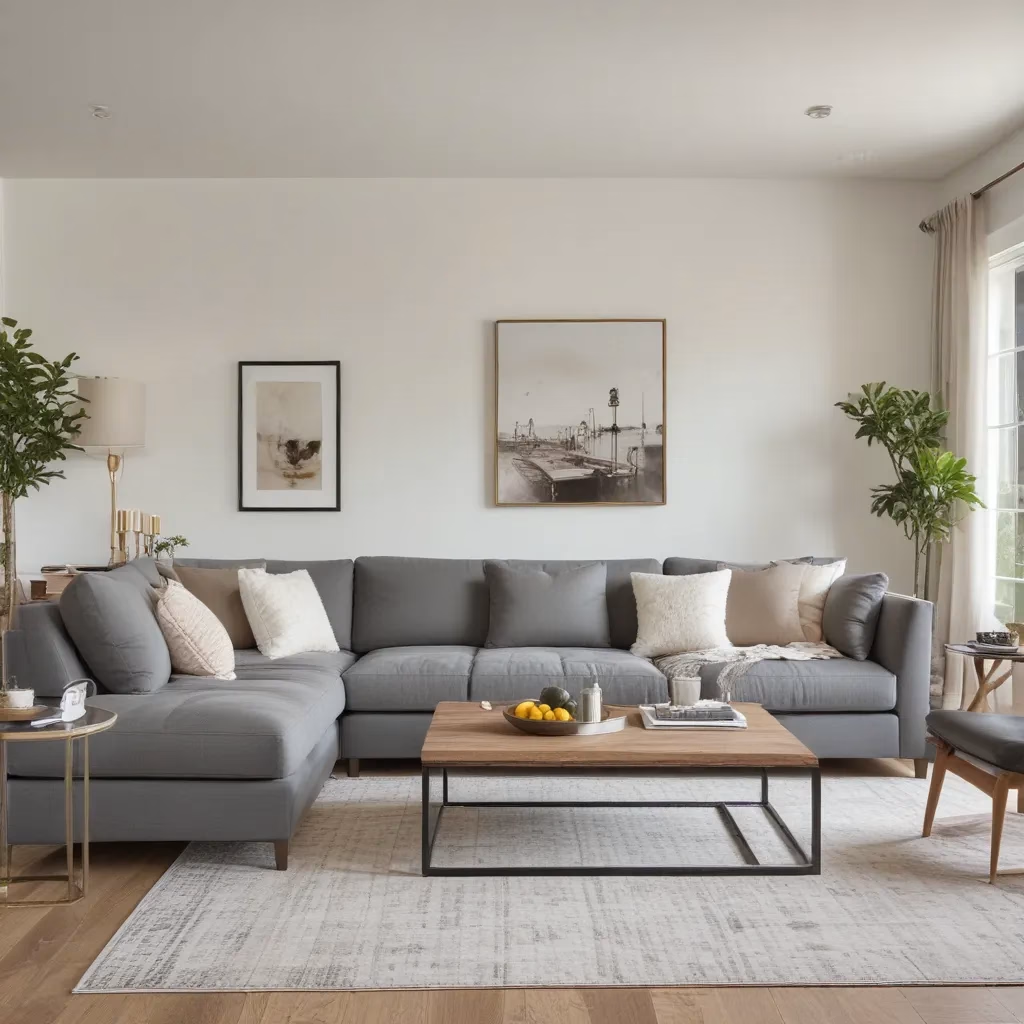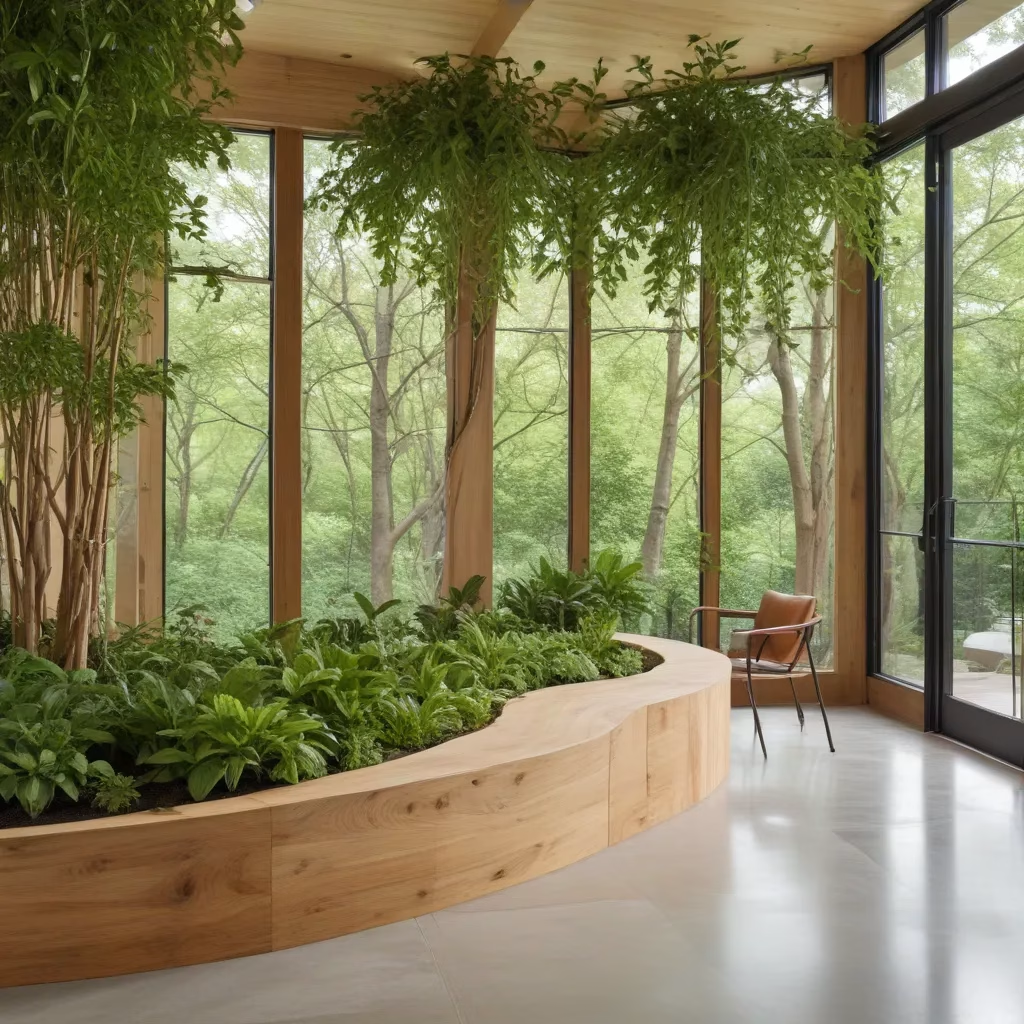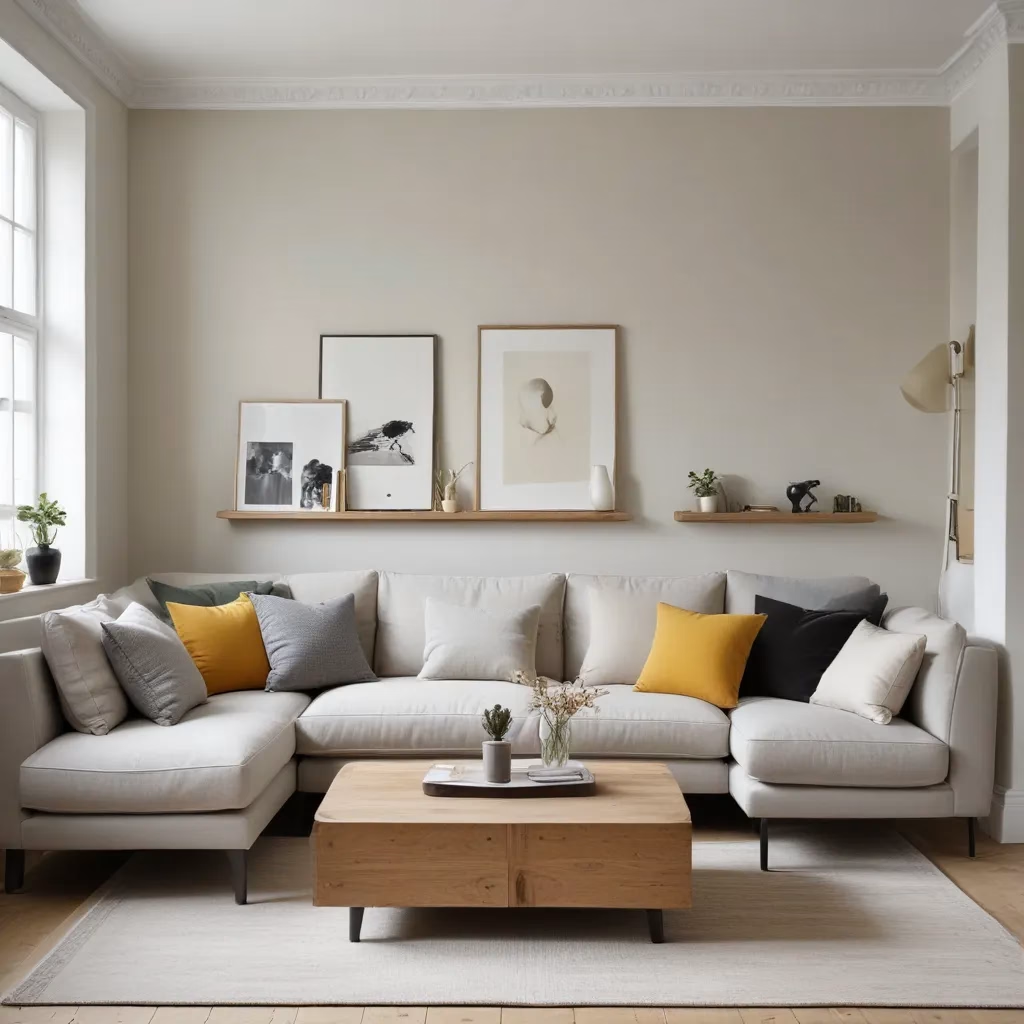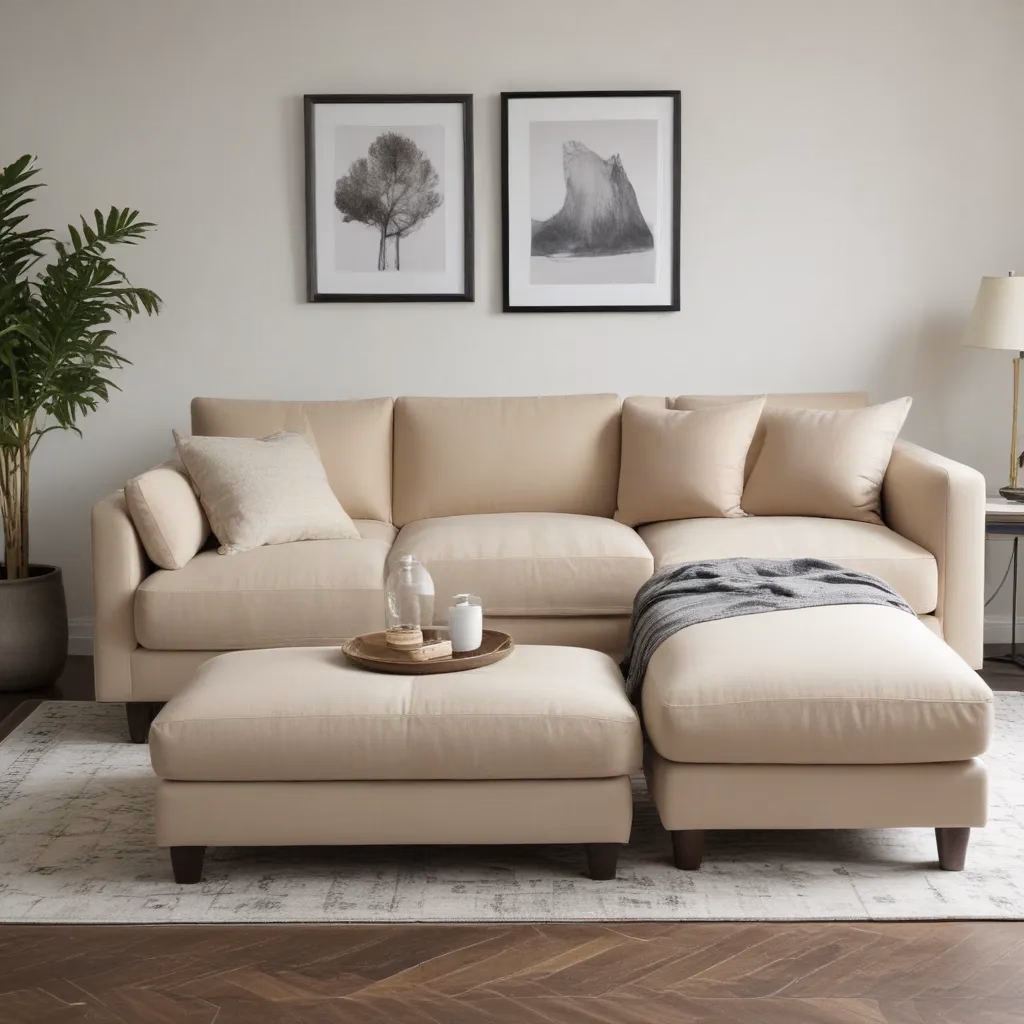
Sofa Placement Strategies for Open-Concept, Flexible, and Multi-Purpose Layouts
In the age of open-concept living, the humble sofa takes center stage as the anchor of any modern, multipurpose space. In our 15 years installing… Gone are the days of confined, compartmentalized rooms – today’s homeowners demand versatility, seamless flow, and a cohesive aesthetic. Thoughtfully arranging your sofa can transform an expansive, open-plan area into a harmonious hub that caters to your evolving lifestyle needs.
Sofa Selection and Purchasing
Before diving into layout strategies, it’s essential to choose the right sofa that complements your open-concept space. The fabric, upholstery, and overall design of your sofa can make a significant impact on the room’s functionality and visual appeal.
Fabric and Upholstery Considerations
When selecting a sofa for an open-concept layout, opt for durable and easy-to-maintain fabrics. Stain-resistant microfiber or performance-grade upholstery can withstand the high-traffic nature of an expansive living area. Leather and velvet also make excellent choices, offering a luxurious aesthetic while being relatively low-maintenance.
Consider the level of cushion firmness as well. Sofas with memory foam or high-density polyurethane foam cushions provide optimal comfort and support, which is crucial in an open floor plan where the sofa may be used for various activities, from lounging to entertaining.
Style and Material Trends
The design of your sofa should tie into the overall aesthetic of your open-concept home. Modular sectional sofas are a popular choice, allowing you to configure the seating arrangement to suit your needs. Mid-century modern and contemporary styles with clean lines and minimal details often complement the open, airy feel of these spaces.
When it comes to materials, natural fibers like linen and cotton evoke a casual, inviting ambiance, while solid wood or metal frames lend an industrial-chic vibe. Mixing and matching textures and finishes can help create visual interest and define different zones within the open layout.
Living Room Layout and Design
Arranging your sofa and other furnishings in an open-concept space requires a thoughtful approach to double-check that the area remains cohesive, functional, and aesthetically pleasing.
Open-Concept Furniture Placement
Positioning your sofa is key to establishing the flow and purpose of your open-concept living room. Avoid placing it in the center of the room, as this can disrupt the natural pathways and create a disjointed feel. Instead, float the sofa in the space, allowing for easy movement around it.
Use the sofa to define distinct zones, such as a conversation area, a reading nook, or a TV-viewing space. Strategically place it to create visual separation without physically dividing the room. Complement the sofa with accent chairs, ottomans, and coffee tables to reinforce these zones.
Flexible Seating Arrangements
In an open-concept layout, your sofa should be adaptable to various needs. Consider a modular or sectional sofa that can be rearranged to accommodate different group sizes and activities. This allows you to easily shift the configuration to suit intimate gatherings or larger social events.
Incorporate swivel chairs or armchairs that can be positioned to face the sofa, creating conversation-friendly seating arrangements. Movable ottomans and poufs also provide extra seating options that can be easily rearranged as needed.
Multi-Purpose Space Planning
Open-concept living spaces often need to serve multiple functions, from relaxation to work and entertainment. Position your sofa to support these diverse uses. For example, place it facing a built-in desk or console table to create a comfortable workspace within the larger living area.
If your open-concept layout includes a dining area, consider a sectional sofa that wraps around the dining table, blending the two zones seamlessly. This arrangement encourages interaction and allows for fluid movement between the living and dining spaces.
Sofa Care and Upkeep
Maintaining the longevity and appearance of your sofa is crucial in an open-concept setting, where it takes center stage and experiences high levels of use.
Cleaning and Stain Removal
Regularly vacuum and spot-clean your sofa to remove dust, crumbs, and any spills or stains. Opt for a gentle, non-toxic upholstery cleaner and always test it on a small, inconspicuous area first. For tougher stains, use a soft-bristle brush and mild dish soap diluted in water.
Be mindful of the fabric type when cleaning. Leather and microfiber sofas may require specialized cleaners, while linen and cotton can often be spot-cleaned with a damp cloth and mild soap.
Prolonging Fabric Lifespan
Rotate and fluff the cushions regularly to maintain their shape and even wear. Slipcovers or throws can also help protect the sofa’s upholstery from fading and wear over time.
If your sofa features removable cushion covers, wash them according to the manufacturer’s instructions. This can help keep the fabric looking fresh and vibrant, even in a high-traffic open-concept space.
Storage and Seasonal Rotation
During off-seasons or periods of low use, consider storing extra sofa cushions or pillows to prevent excessive wear and tear. This can also help you easily transition the look of your living room to match the changing seasons or your evolving design preferences.
Invest in storage ottomans or under-sofa drawers to neatly tuck away these items when not in use. Proper storage will help double-check that your sofa maintains its shape and condition for years to come.
Styling and Aesthetics
While functionality is paramount in an open-concept layout, the visual appeal of your sofa and its surrounding decor also play a crucial role in creating a cohesive, inviting atmosphere.
Complementary Decor Elements
Choose accent pillows, throws, and area rugs that complement the color, texture, and style of your sofa. This helps tie the entire living space together, ensuring a harmonious, visually appealing look.
Consider incorporating lighting fixtures, wall art, and decorative accessories that echo the sofa’s aesthetic. Pendant lights or floor lamps positioned around the seating area can both illuminate the space and highlight the sofa as a focal point.
Balancing Comfort and Visual Appeal
While comfort should be a top priority when selecting a sofa, it’s important to strike a balance between functionality and visual appeal. Opt for a well-padded, supportive design that also complements the overall style of your open-concept space.
Experiment with throw pillows and blankets to add layers of texture and coziness. These accents can soften the sofa’s silhouette and make the seating area feel more inviting.
Personalized Touches and Customization
Infuse your open-concept living space with unique, personalized details by customizing your sofa. Consider custom upholstery, decorative trim, or tufted details to create a one-of-a-kind piece that reflects your individual style.
You can also incorporate family heirlooms or vintage finds into your sofa styling, blending old and new elements to create a warm, eclectic ambiance. These personal touches will make your open-concept home feel truly lived-in and welcoming.
Furniture Buying Guides
Selecting the right sofa for your open-concept layout requires careful consideration of measurements, budget, and features. Utilize online buying guides and comparison tools to double-check that you make an informed purchase.
Measuring for the Right Fit
Accurately measure the available space in your open-concept living room to determine the appropriate sofa size. Consider the length, depth, and height of the piece, ensuring it will fit comfortably without overwhelming the room.
Also, be mindful of doorway and stairwell dimensions if you need to navigate the sofa through tight spaces during delivery or relocation.
Budgeting and Cost Comparisons
Sofas can vary significantly in price, depending on factors like materials, brand, and customization options. Establish a realistic budget and research cost comparisons across various retailers to find the best value for your open-concept space.
Don’t forget to factor in delivery fees, warranty coverage, and assembly costs when calculating the total investment for your new sofa.
Researching Reputable Retailers
When shopping for a sofa to anchor your open-concept layout, prioritize researching reputable, high-quality furniture retailers. Look for stores that offer in-person showrooms or virtual design consultations to double-check that the piece you select will seamlessly integrate into your space.
Check customer reviews, return policies, and warranty information to double-check that you’re making a sound investment that will stand the test of time in your open-concept home.
Integrating Sofas into the Home
Harmoniously incorporating a sofa into an open-concept layout requires careful consideration of your existing furnishings, the room’s flow, and your evolving needs.
Coordinating with Existing Furnishings
When selecting a sofa for your open-concept living space, aim to choose a piece that complements your existing furniture, flooring, and wall colors. This will create a cohesive, visually appealing aesthetic throughout the room.
If you’re starting from scratch, consider the overall design style you’d like to establish, and select a sofa that will serve as the foundation for the rest of your furnishings.
Multipurpose Sofa Configurations
In an open-concept layout, your sofa should be versatile enough to accommodate a variety of activities. Look for convertible or modular designs that can transition from a cozy lounge area to a supplementary dining space or workspace.
Incorporate nesting tables, ottomans with storage, and adjustable lighting around the sofa to enhance its multipurpose functionality.
Flexibility for Evolving Needs
As your lifestyle and design preferences change over time, your sofa should be able to adapt accordingly. Choose a timeless silhouette that can easily be re-styled with throw pillows, blankets, and accent pieces.
Consider the longevity of your sofa’s materials and construction, ensuring it can withstand the wear and tear of an open-concept living space for years to come.
Trends and Design Inspiration
Stay up-to-date with the latest sofa designs and open-concept layout ideas to create a visually stunning and functional living space.
Contemporary Sofa Silhouettes
Sleek, low-profile sofas with clean lines and minimal details are increasingly popular in open-concept homes. These streamlined designs help maintain a sense of openness and visual lightness within the larger living area.
Experimenting with curved or L-shaped sofa silhouettes can also help define distinct zones without visually dividing the room.
Maximizing Small Living Spaces
In compact open-concept layouts, strategic sofa placement and selection can make all the difference. Sectional sofas and modular designs that can be configured to fit the space are excellent options.
Multifunctional pieces, such as storage ottomans or sofa beds, can also help maximize the efficiency of your limited square footage.
Blending Old and New Elements
Embrace the juxtaposition of vintage and contemporary by incorporating a timeless, heirloom-quality sofa into your open-concept living space. This can create a warm, layered aesthetic that balances the modern openness of the room.
Complement the sofa with modern accent pieces, natural materials, and textured accents to achieve a cohesive, eclectic look that feels both curated and comfortable.
By carefully selecting your sofa and arranging it within an open-concept layout, you can transform your living space into a harmonious, multifunctional oasis that caters to your evolving lifestyle needs. Remember to consider factors like fabric, flexibility, and personal style to create a truly inviting and adaptable home.
For more inspiration and expert guidance, be sure to visit SofaSpectacular.co.uk – your ultimate destination for high-quality sofas, upholstery, and living room décor solutions.
Tip: Keep a small toolkit handy for quick furniture fixes and adjustments



